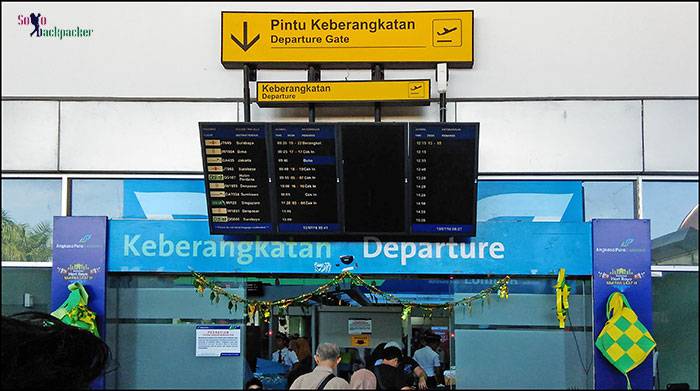How to manage money abroad is a question that always comes in the mind of a traveller, while planning an international trip. There are variety of options available in the market to plan the expenditure during an international trip. And that is where people get confused to chose the best available option among Cash, Credit Cards, Debit Cards, Wallet/UPI/PayPal, Traveler’s Cheques, Prepaid Travel Cards etc. This article intended to explain the pros and cons of various options as well as their best uses while travelling to a foreign destination.
Contents
1. Carrying Cash On An International Trip
2. Carrying Debit Cards On An International Trip
3. Carrying Credit Cards On An International Trip
4. Carrying Forex Cards On An International Trip
5. Should You Pay in Cash or Swipe While Shopping?
6. Carrying Traveler’s Cheque On An International Trip
7. What About Wallet Money/UPI/PayPal?
8. Tips For Safe Handling of Your Money
1. Carrying Cash On An International Trip
Best Use: For the expenses related to visa fee, taxi fare, bus fare, meals etc right after the arrival in foreign country.
Carrying Cash is always the best way while travelling abroad. However, it is always prone to the theft and burglary. While carrying cash always helps you to meet your financial needs right away, it makes you more vulnerable outside the comfort zone. Carrying cash helps you to avoid the long queues in the banks and at the ATMs. It helps you to satisfy an immigration official that you have sufficient money to meet your expenses. But, it is not always advisable to carry a large amount of cash while travelling abroad. So, how should you deal with the cash money while travelling abroad? It’s better to combine the cash option with other options to smartly manage your expenditure. Some pointers are here to help you in managing your cash money abroad:
What Amount of Cash Should You Carry?
As far as possible, carry that much cash amount sufficient to meet your expenses for two days at your destination. You may require it for visa-on-arrival fee, taxi fare, bus fare, meals etc. Within two days, you should be able to get more money though other options available in that country. How much cash you should keep then?

In my opinion, if you travel to a South East Asian destination, carrying 150/200 USD is good enough for the initial days. Carry one large bill of 100 USD and other smaller denominations of 10 USD or 5 USD. If you travel to an European or US destination, you should carry at least 500 USD in cash with you. You can carry 2-3 bills of 100 USD and other of smaller denominations. Please notice that the coins are not accepted at the currency exchanges. Also, the bigger denomination notes of USD or EURO get good conversion rates than the smaller denominations.
Which Currency Should You Carry?
As far as possible, try to carry USD. There are two strong reason for this. First, the currency conversion is easily available at many places. Second, it has a good value, so you have to carry small quantity of the bill notes. But, if you are going to a foreign destination that is very much popular among your own people, then try to carry the local currency of that destination. It helps you to avoid the double conversion rate.
For example, You are travelling to Thailand from India. In this case, it is advisable to carry Thai Baht (THB) instead of USD, because THB is easily available with at the money exchanges in India at very competitive rate. It helps you avoid the double conversion, first in India from Rs. to USD and then in Thailand from USD to THB. It also helps you to pay for Visa-on-Arrival fee in Thailand, that is acceptable in THB only. In another example, if you are travelling to Egypt from India, then it is better to carry USD instead of Egyptian Pound (EGP), because you may not get EGP easily in India at a good conversion rate.
Also, do not try to carry Indian Rupees (INR.) during an International Trip. There are two reasons for this:
a. You are not allowed to carry more than Rs. 5000 on an international trip as per the RBI rules.
b. You may not get a good conversion rate if you land in a foreign country with your local currency except USD/EUR/GBP.
How To Use Currency Exchange Services?
Airport counters always offer the worst currency exchange rates. So are the counters at the bus stands and railway stations. Try to exchange your currency with an authorized dealers located in the city markets. Always check with 3-4 dealers to find out the best conversion rate. Use app like XE Currency to know the latest conversion rates. The rate offered by an exchange can be different from the app, but you are at least aware that how much is the rate difference.
Planning a trip abroad, read this post to know about some basic preparation: How to Plan Your First International Trip?
Should You Carry Any Other Currency?
You may notice that at few places you can pay for the expenses in other currencies also. For example, Indian Rupees is acceptable at many places in Nepal and Bhutan. Similarly, USD is acceptable at many places in Cambodia. Hong Kong Dollars are widely acceptable in Macau. The disadvantage of this arrangement is that you may lose few bucks in this case. For example, One USD is equal to almost 4090 Cambodian Riel, but in general, they consider One USD as 4000 Cambodian Riel.
How To Distribute Your Cash Safely?
It is always better to distribute your cash in different pockets of your backpack and the clothes. Carrying a decoy wallet is also a good idea to avoid pickpocketing, but I normally don’t prefer this. I divide the cash bills between my wallet, jeans pockets, backpack and a sling bag. I also keep some amount in a hidden pouch of my backpack. Just remember not to put all eggs in one basket. Also, it’s always better to keep some lose money away from your main money to pay for immediate fare, meals or shoppings while going outside from your hotel.
Permissible Cash Limit For An Abroad Trip
In Indian Currency: upto Rs.5000 to any country other than Nepal or Bhutan, and any amount in denomination not exceeding Rs.100 to Nepal or Bhutan.
You may refer this link from Reserve Bank of India for all queries related to carrying the money on an international trip,
In Foreign Currency: Travellers are allowed to purchase foreign currency notes/coins only up to USD 2000. Balance amount (upto USD 10,000 total in a calendar year) can be taken in the form of traveller’s cheque or banker’s draft.
2. Carrying Debit Cards On An International Trip
Best Use: Getting cash in local currency at the best exchange rates in easiest way
Debit card is my preferred way to get local currency on an international trip. They normally offers the best available currency exchange rates. You should keep following points in your mind while relying on Debit Cards during an international travel:
Currency Exchange Rates
As I said, they are the best options to get the best exchange rates.
Which Type of Debit Card?
Any International Debit Card with visa, master card, cirrus or maestro logo that you use in your country should work fine. If your card is a RuPay Card or having other logo, you should check with your bank, whether it is good for that particular international destination or not. A Debit card must be an international Debit Card to work in a foreign location. A simple shopping-cum-ATM debit card, or shopping card is not useful for international transactions despite of having a Visa or Master Card logo.
In case of the credit card, you are supposed to inform your issuing bank before your international departure, so that they don’t block your card after getting suspicious on an international transaction. However, there is no such restrictions to inform your bank beforehand for the Debit Card Transactions.
Debit Card PIN for ATM Withdrawal
The 4-digit PIN that you use in your home country is valid for the international transactions also.
ATM Withdrawal Limits
The withdrawal limit is same as in your home country in many cases. Suppose your withdrawal limit in your home country is Rs. 25,000 per day, then you can withdraw Thai Baht in Thailand equivalent to Rs.25,000 per day. But, if you have too high withdrawal limit per day (Say, Rs. One Lakh) in your home country, then it is not necessary that you can withdraw that much of amount from an international ATM also.
Many banks in the destination country also set their maximum limits for an International Debit Card. For example, in Thailand, this limit vary from 20,000 THB to 50,000 THB. Suppose, you want to withdraw 45,000 THB in a day, and it is under daily withdrawal limit in your home country. But, in Thailand, the bank ATM has maximum limit as 20,000 THB (assume) per day. In this case, you have to use the ATMs from three different banks to withdraw the required amount in a day.
Charges Involved in Debit Card Transactions
There are three type of charges involved in a debit card transaction performed at a foreign location:
a) Currency Conversion Charges: It depends on the exchange rates at the time of transaction and normally remains same for all the banks.
b) International Withdrawal Charges: This charge is levied by your bank for an international transaction and normally vary from bank to bank. For example, SBI and HDFC both charges Rs. 25 + GST for balance enquiry at International location, while for a withdrawal SBI charges Rs.100/- min. + 3.5% of Txn. Amt. + GST, while HDFC bank charges Rs. 125 + applicable taxes. The withdrawal charges may also vary according to your bank account with the banks or type of Debit Card you have.
c) Charges Levied To Use The Foreign Bank ATMs: In many places, local banks also charge some fee for using their ATMs. For example, In Cambodia, National Bank of Cambodia and ANZ charged USD 4.00 per withdrawal just for using their ATM, while Canadia Bank did not charge any fee from me, however it is no longer free (USD 5.00 per withdrawal). Similarly, in Thailand, all bank ATMs charge THB 200 per withdrawal.
Debit Card From An International Bank
Some international banks may offer free ATM withdrawal worldwide on their Debit Cards, if you use their ATMs on an international location. For example, If you have a Debit Card issued by HSBC and use HSBC ATMs for the international withdrawal, you do not have to pay any additional charges other than the currency conversion, but if you use other bank ATMs for cash withdrawal, then you may have to pay other charges (Rs.120 + applicable taxes) as well.
Liability Towards a Debit Card Theft
Just like in your home country, if your Debit card is stolen in a foreign country and you don’t report to block it immediately, you are liable for all fraudulent transactions. Bank will never return your money in that case.
Best Practices To Use Debit Cards
a) Try to withdraw large amount in one go. For example, if you plan to stay for 20-days then expect to use ATMs only twice during the whole trip. The bank charges are there on a single transaction basis. If you withdraw only 100 THB in one transaction, then also you are supposed to pay 200 THB as the ATM usage charge.
b) Always carry at least two international debit cards during an international trip. You never know when your debit card would be sucked by the ATM machine.
c) Enable the net banking for your account, so that you can keep a watch on every transaction online. It also helps you to transfer money between different accounts.
d) Keep the customer care number of your bank with you. In case of the loss, report it to the bank so that they can block your card immediately.
e) Take out your debit card and check for the group of ATM network logos on its reverse side. You’ll need to check each foreign ATM machine before you use it to see if it is part of your financial institution’s network. Debit cards interact with your financial institution via a system of computer networks. Maestro and Cirrus, two of the largest ATM networks, belong to MasterCard. Similarly, Visa owns the Plus network.
f) You can also know about the ATM availability online for your destination country. Both Visa and MasterCard offer online ATM locators.
3. Carrying Credit Cards On An International Trip
Best Use: Large transactions such as Airlines Tickets, Hotel Bills, Huge Shopping Bills etc.
Armed with a credit card, you won’t really have to deal with currency conversion that means no more worries about converting just the right amount of money, and you will automatically get one of the lowest conversion rates possible. Here are some points that you should keep in mind while using a credit card abroad:
Currency Exchange Rates
They are the best options to get the best exchange rates, similar to the debit cards.
Which Type of Credit Card?
There are no such restrictions as in the case of Debit cards. You can use most of the credit cards for international transactions. But in case of the credit card, you are supposed to inform your issuing bank before your international departure, so that they don’t block your card after getting suspicious on an international transaction.
Learn few tips to book a cheap flight ticket: Tips to buy cheap flight tickets
OTP During International Trip
In your home country, you get an OTP on your mobile to authenticate your credit card transaction, known as Two-Factor Authentication (2FA). This authentication is the restriction imposed by RBI, so it is mandatory only in India, and for the transactions with Indian businesses. Foreign businesses may not be abide by this law.
You may have notice that while doing the transaction in an international currency even from India, you don’t get an OTP. Same thing happens with the credit card transactions during an international trip. You don’t have to get an OTP. Some establishments may ask for Verified By Visa password for the second-factor authentication in case of VISA cards. In case you need OTP during an international trip, then you have the following options:
a) Activate international roaming on your mobile number.
b) Ask your bank to send an OTP on your registered e-mail.
c) Leave your mobile number at home with a family member and ask for OTP over WhatsApp or Call.
Charges Involved in Credit Card Transactions
There are two type of charges involved in a credit card transaction performed at a foreign location:
a) Currency Conversion Charges: It depends on the exchange rates at the time of transaction and normally remains same for all the banks.
b) Mark-Up for the International Usage: This charge is levied by your bank for an international transaction and normally vary from bank to bank. Most of the banks charge 3-3.5 % mark-up for the international transactions.
Liability Towards a Credit Card Theft
Pick pocketing and theft will be less of a threat in case of the credit card. If your card is stolen, you won’t actually lose money. Just report your card missing and you’ll be off the hook for any unauthorized transactions.
Best Practices To Use Credit Cards
a) Never use your credit card for the cash withdrawal at ATMs (Even in your home country). The interest rate is very high.
b) As far as possible, carry at least two international credit cards during an international trip.
c) Always watch merchants imprinting your card and keep your receipts. After you get home, check your credit card statement. If you see charges you didn’t make, call your creditor and ask them to dispute the charges.
4. Carrying Forex Cards On An International Trip
Best Use: To keep a tab on your expenditure as this is a prepaid card.
Also known as a Prepaid Travel Card, it is just like a debit card. While your debit card carries Indian Currency and when you make a transaction, exchange rates apply at that point of time. But, in case of Forex Card, you load the money in foreign currencies, and use the card like an international debit card during a trip. These cards can be reloaded from your branch by any relative in case of further cash requirement while you are in abroad. As with credit and debit cards, check the fees carefully.
Types of Forex Cards
There are two types of Forex Card:
Single Currency Card: They carry only one currency. If you intended to travel only in USA, then it’s better to carry a single currency card with pre-loaded USD.
Multi Currency Card: They carry multiple currencies varying from 10 to 20 in numbers. Suppose you plan for a multi-country tour from USA, to UK, to Switzerland; then you can load three currencies like USD, GBP and CHF in a single card. This way, while in USA you can withdraw USD; in UK, you can withdraw GBP and so on.
How to Get Forex Cards?
Many banks issue a prepaid travel card or a Forex Card in India at a nominal fee. You can even apply them online. At most of the places, they require the following documents: 1) Passport 2) Visa 3) PAN 4) Air Ticket and 5) Application Form.
Charges Involved in Forex Card Transactions
Bank Related Charges: These type of charges include the account opening charges, maintenance charges, currency loading charges etc and vary from bank to bank.
Cash Withdrawal Charges: ATM withdrawal are not free in case of Forex cards. They are subjected to a withdrawal charge (USD 1.75 to USD 2.5 in case of USD) if you withdraw one of the loaded currency. This charge vary from one currency to another. If you withdraw currency other than the loaded one in the card, there is currency exchange and conversion charges as per the rules.
ATM Usage Charges: Just like a debit card, An International ATM can charge you the ATM usage fee, e.g., 5.00 USD in Thailand.
Step-by-step guide to get you through your first flight experience: How to travel first time by a flight?
Liability Towards a Forex Card Theft
Same as in the case of Debit Cards. You should report your missing card immediately to the bank, so that they can block your Forex Card. If you don’t do so, you are liable for all the fraudulent transactions. In case of Forex Card, the bank also provide a stand by card for such situations. If your stand by card is still at a safe location, you can use that card to keep your trip going after informing your bank.
More Points About a Forex Card
1. With a Forex Card, you are protected against the fluctuations in currency rates. The exchange rates are locked-in once you load the card.
2. Since, the currency exchange rates are locked-in for the Forex Cards, it is useful to load them when forex rates are low and use them when forex rates are high.
3. You can use Forex Cards at any ATM just like Debit Cards.
4. You can shuffle funds from one currency to another when you need via prepaid net banking.
5. It can be reloaded by any relative or friend at any branch of your bank in India, if you need any emergency fund during an international trip.
6. After completing your trip, you must withdraw all amount from the Forex card as per the regulatory requirements.
5. Should You Pay in Cash or Swipe While Shopping?
It’s always better to swipe the debit/credit/Forex card at Point of Sale (POS) (Swipe Machines). In this case, the bank will mostly charge the forex conversion charge plus a mark-up charge of 3-3.5 % plus applicable taxes. You can save on the ATM withdrawal charges as well as ATM usage charges.
The only concern is the security-related, i.e. skimming of the card at the point of sale. While traveling abroad, always swipe your card at the POS of trusted merchants and be vigilant.
6. Carrying Traveler’s Cheque On An International Trip
Best Use: In case of emergency like an unserviceable ATM or secure alternative to cash
Generally speaking, traveler’s cheques have been outdated now. Not many people use them nor many businesses accept them. Even banks abroad may not encash them. It’s better to avoid Traveler’s Cheques these days.
7. What About Wallet Money/UPI/PayPal?
Wallet money can only work in case of international merchants like Amazon or Uber. UPI doesn’t work abroad because their security is related to your mobile number. However, National Payment Corporation of India (NPCI) is making efforts to enable UPI usage during an international trip.
PayPal is a good alternative. You don’t know when it will come in handy to rescue you. Many merchants accept PayPal payments worldwide. While booking for the Trans-Siberian Railway Tickets, I noticed that the Russian websites were not accepting my credit or debit cards for the transactions. Later, I found a website that was accepting the payments through PayPal. I was able to book all the tickets and saved thousands of rupees on that trip.
Disclaimer: The PayPal experience is not an endorsement for the PayPal and I don’t have any business with them. It was just a useful experience.
8. Tips For Safe Handling of Your Money
1. It’s best to have a combination of money sources: a small amount of cash and two cards (debit, credit or Forex whatever you chose, but keep two cards in case one is declined or stolen!).
2. Make sure you keep a record of your debit and credit card numbers and related customer care numbers on a separate piece of paper at separate place away from your cards. But don’t make your bank account details too obvious or record your pin number!
3. Keep records of your traveler’s check numbers. If they get lost or stolen you will need this information to get them replaced. If the worst happens, call to cancel them immediately.
4. Protect yourself from credit card fraud while you’re travelling. And try to avoid online banking from a public internet café.
5. If you can, then always keep a hundred dollar note somewhere deep in your backpack which could not be searched easily.
6. This is when you’ll be glad that you took out a travel insurance. Firstly, report any theft to the local police (and get written documentation if possible). Then, call the 24 hour emergency assistance line of your travel insurance provider. Depending on your insurance, you’ll be covered for the loss of both cash and plastic – including any losses on your account. You’ll also need to notify your bank immediately so they can cancel your cards.
8. Store your cash and cards separately to minimise the risk of them all being lost or stolen at once. A money belt is useful for keeping them safe and hidden on your person. If you have an in-room safe, keep one card locked away for emergencies. As for as possible, keep your purse in the front pocket at the crowded places. It may cause some inconveniences, but at last it will save your hard-earned money.
No matter what your budget, chances are that the local people of your host country manage on less. And they not only survive, they enjoy themselves. You can learn a lot about saving money simply by observing the lifestyle of the locals around you.








Sir, I am going to china on my new job. Compny is ptoviding me visa and air tickets. As this is my first overseas job, what more things are necessarily required to carry with me like minimum maximum money to survive for first month, any papers required, id proof, luggage to survive there and most important the formalities required at airport after arrival in china.
Pls help.
Hi, instead of carrying cash, better to carry an international debit card. You will be able to withdraw money in Chinese currency. one RMB is roughly equal to 9 INR, so you should carry at least . You can not carry more than INR 5000 in cash, while travelling abroad, but for USD this limit is USD 2000. You carry around 300 USD to spend for first few days and after that withdraw currency from the ATM. I generally carry 200 USD to spend for few days, and when I land at the airport, I withdraw the local currency. Always have your passport with you. That is the sufficient document for your identity. After landing at the airport, just walk towards the immigration counter by following other passengers and keep your passport and duly-filled arrival card (you will probably get in the flight) handy. Since, your visa is stamped on the passport, you can clear the immigration to enter in China. Have a nice trip.
Sir, I have sbi debit card marked VISA on it. Can I use this in china? Also one more thing, my passport has my old house address. Later I shifted to my new home but couldn’t get the address changed in my passport because applying 4 this will take around 2 months and I hv to join in july.
Address at the passport will not create any problem. The passport is the indication that you are a citizen of India, which part of India doesn’t matter. Make sure your SBI debit card is an International Debit Card. It should mentioned at your card. Cards like ATM-cum-Shopping card will not work. You can use your SBI ATM pin in China also, wherever an ATM displays a visa logo.
I Came to USA for a short visit. I have expended the dollars brought by me. I am having Andhra Bank Visa debit card. Can I draw US dollars here?
K.A.Rao
Hi, if that visa card is an International Debit Card, then you can withdraw Dollars there in USA.
In Bangkok , while withdrawing cash in ATM ,does it automatically converted in thai currency.
service charges to convert USD to thai currency in bangkok
now 2014 what is limit to take currency to take from india to thailand,
Hi, You can withdraw Thai Baht directly from the ATM using an International Debit Card. Equivalent INR amount will be deducted from your Indian bank account. The bank conversion rate will depend on that time exchange rate plus transaction charges. These charges are vary from bank to bank and generally in the range of INR 120 to INR 150 per transaction for Indian Banks. The exchange rates are generally set by the network providers i.e. Visa or MasterCard at the time of transaction. Bank also charges 3.5 % currency conversion charges generally. Sometimes ATM providing bank also charges for every transaction (Usually USD 4.00 per transaction, However, I found those ATMs in Cambodia, but not in Thailand). So, Withdrawing smaller amount several times is costlier than withdrawing the same amount in a single transaction.
The amount permitted is INR 5000 while traveling to or from countries other than Nepal and Bhutan. There is no limit for these two countries. You can carry only INR 5000 in cash, but for USD this limit is USD 10,000.. You can carry upto USD 2000 in cash, while rest of the amount in the form of traveller’s cheque or banker’s draft.
Hai,
Many thanks for the detailed write up. However I would like to add as under, for the benefit of the readers.
You have said … “You will require around 500 USD to live in South East Asia for 15 days. So, just carry five 100 USD notes in different places of backpack, in your pocket and in your valet and that will be enough for you.”…
It is always wise to carry some small currencies also. In this particular case, I would carry 3×100$, 2×50$, 3×20$, 3×10$, 10×1$ = 500$. The conversion rates for small currencies might be less. But we will save lot of money specially at the fag end of the tour, by having smaller denominations. Let me explain in detail. Say I am going to Sri Lanka. And 1 $ = 130 LKR approx. I will use the 100$ in the beginning of the tour. And at the end of the tour, I might need only a small amount, say 250 LKR. In such a case, I can exchange only 2 $, otherwise I have to exchange 100 $ (13000 LKR) for the sake of just 2 $ (250 LKR).
I also have a doubt. Kindly reply.
I have an SBI international debit card. While abroad (say USA),
1. Is it better to withdraw money at ATM and use it for shopping; OR; is it better to swipe the debit card while shopping?
2. What will be the amount that I need to pay SBI if I withdraw 100 $ (@ say 62 INR per $) at any ATM… including all charges.
3. What will be the amount that I need to pay for a similar exercise, if I swipe my card for 100 $ in a shopping mall?
I tried to contact SBI, but could not get a firm reply. In case if you have done this similar exercise, can you give me the details.
Thanks in advance.
Hi, Thank you for such a detailed explanation on this. I agree with this point of having money in smaller currencies also. I really never swiped my card for shopping. So, don’t have a clear idea on this. But what I knew from my experience on International Transactions, I can say that swiping a card is better than withdrawing money from ATM to use it for shopping. While withdrawing money from ATM, we have to pay for the exchange rate as well as some transactions charges also. For example, Apart from the currency exchange rates and currency conversion charges (generally 3.5 %), SBI charges additional INR 150 per transaction plus INR 15 as service charge per withdrawal at any ATM abroad for its INTERNATIONAL ATM-CUM-DEBIT CARD. But while swiping a card, we have to pay the currency exchange rates (plus 3.5 % currency conversion charges) only. There is no transaction charges on card-swiping at POS.
hi,
I have to travel malaysia , and i want to use my debit card for cash withdrawal at atm , is the debit card must be chip based according to RBI rules ?
Hi, That rule is for Credit Cards basically. You can withdraw money from the ATMs using an International Debit Card.
Dear Avnish,
I am due to travel to Melbourne and my query is regarding the usability of my SBI classic card. Its a VISA Debit card cum shopping card. I had a Maestro shopping card and that I am sure was not usable abroad. This is a latest replacement card that I have been given. It is not an international card, but being a VISA card would it still be usable? To draw cash or to swipe and shop?
Hi Shravan, I doubt if it works for the said purposes. Better to check with your customer care. I also have a Maestro Debit-Cum-Shopping Card from SBI, but it doesn’t work overseas. It should be an International Debit/Credit card to use overseas. Generally, it is mandatory to inform the bank before making any international transactions overseas, but mainly in the case of credit card. No prior intimation is required in the case of Debit Card. They may authorize for this purpose. SBI Customer care can clarify it in a better way.
Hi! I am in Dubai and I would like to know if I can withdraw money using my SBI debit card which is a Maestro from the ATMs here in Dubai.
Many thanks.
Hi..You can withdraw money using SBI Debit Card provided that it should be an International Debit Card..For example, I have a SBI Shopping card and I can’t withdraw money from that card while travelling abroad. So, just check on the front of your card whether it is an International Debit Card or not?
Sir I live in Dubai can I withdraw my money from sbi shopping card recently found a address of sbi in Dubai can I withdraw my money from there?
Hi, I don’t have any idea. Generally, it should be an International Debit Card, so you can’t use a shopping card abroad. But, since its a SBI ATM in Dubai, you can try with shopping card. Also, check with the bank, if there is any transaction cost. If possible, please inform me also.
thanku sir
Hi sir,
This is lakshman from andhra. This month i am going to thailand( BANGKOK) trip offerring from airtel dth. They said that bring 500 usd ( currency issuing from 2003 onwards) . I have sbi maestro and hdfc platinum . Is this cards usefull for withdrawing cash and any shopping purposes. Pls reply me this my first experiencegoing to abroad.
lakshmannaiddu227@gmail.com
9963260401
Hi, Please clarify whether it is a Debit or Credit Card. If it is a credit card, then it can be useful for the cash and shopping purposes, but they may attract higher bank charges. Please check it with your banks. If it is a Debit Card, then you can withdraw money available in your account in THB (Thai Baht Currency) to spend in Thailand at any Visa/Maestro/MasterCard ATM in Thailand. It also attracts some bank charges (Around 125 INR for SBI Debit Card per withdrawal).
Hi, i am traveling to Thailand for the duration of a month for a skydiving course and i need to convert around 2.5 Lakhs INR into Baht. What do you suggest is the best way to do this?
1. Getting traveling cheques means, i have to convert from INR->Dollar->Baht. Double conversion and i might lose money.
2. Carry 2-3 debit cards and withdraw maximum money in ATM’s and save the conversion charges and rates but endure the withdrawal charges from both banks.
Why do you say converting INR->Baht in Thailand will cost me more??
Pls advise, i am in a big fix on what to do.
Hi,
1. Getting traveling cheques means, i have to convert from INR->Dollar->Baht. Double conversion and i might lose money.
Yes, Double conversion may cost more money, but carrying USD and converting them in a Foreign Country is the best way, as many money changers generally do not accept INR, but they easily accept USD and EUR.
2. Carry 2-3 debit cards and withdraw maximum money in ATM’s and save the conversion charges and rates but endure the withdrawal charges from both banks.
This is the best thing you can do in my opinion. Withdrawal charges for Public Sector Banks like SBI, Vijaya Bank are generally INR 165 per withdrawal..If you are carrying a debit card with daily withdrawal capacity of about 30000 INR (it can be more), then in 8 withdrawls, you will lose about INR 1300 as withdrawal charges.
Why do you say converting INR->Baht in Thailand will cost me more??
This is because of the unwillingness of money changers to accept INR..If you can arrange a favorable money changer in India or Thailand for currency exchange, then this method will be the best way to get a good deal.
Have a nice trip to Thailand. 🙂
Hello,
I got sbi vishwa yatra foreign travel card with me in 2010. i used some money from card and left about £50 in card . Recently I visited India, ther I lost my card. I have reliazed after coming to UK. can i get replacement of card?. Can i have number to inform about lost card? Can anybody respond me. its urgent pls…..
Hi Savitha,
You should inform immediately to State Bank Helpline 1800-112-211 (Toll free-if in India) or 91-22-27566598/91-22-27580506 (paid-if outside India) so that the Card is immediately blocked and misuse of the lost Card is prevented/ minimised. The call Centre will ascertain the following additional information i.e.Type of Card (You have to mention as State Bank Vishwa Yatra Foreign Travel Card),mother’s maiden name, date of birth, passport number, to establish the identity. Any financial loss arising out of unauthorized use of Card(s) till the Card is hot-listed (blocking the card) will be to the your account.
On verification of the security information, the card will be blocked and a replacement card along with PIN will be sent on the address furnished by you as soon as possible. The usual charge of USD-5/GBP-5/Euro-5/CAD-5/AUS-5/Yen-500/SAR-15/SGD-6 for issue of replacement card together with the actual courier charges will be debited to the card account.
hi..Avinash i want to visit manila , i have sbi international debit card. do i need to have some local currency too? can i booked the flight ticket through my debit card?
Hi Pramod, You can withdraw money from an International Debit Card (Visa, Master or Maestro) in Manila..You will get money in the local currency of Philippines..You can also use this international debit card for flight bookings..Another suggestion, If you have only one card, then do not depend on it completely..Any bad thing can happen..Better to have about 100 USD in cash, that you can use to exchange money in local currency at the airport, so that you can use that money for your taxi fare from the airport to the hotel, food etc..Also, if possible carry one extra Debit or Credit Card.. 🙂
Hi Avinash,
I am travelling to Mauritius for a week. I have heard that we can carry indian rupee abroad also. Is there a limit on how much INR can be carried by Indians?
As u mentioned, USD is safest everywhere but If I carry USD from India and it gets converted to Mauritian rupee again, then I might be losing more due to double conversion right?
Hi Abhijit,
The amount permitted is INR 5000 while traveling to or from countries other than Nepal and Bhutan. There is no limit for these two countries.
You are right regarding the double conversion rate. But there is no other option legally. You can carry only INR 5000 in cash, but for USD this limit is USD 10,000.. You can carry upto USD 2000 in cash, while rest of the amount in the form of traveller’s cheque or banker’s draft. For more details, read question nos. 7 and 11 of this RBI link:
http://www.rbi.org.in/scripts/faqforex.aspx